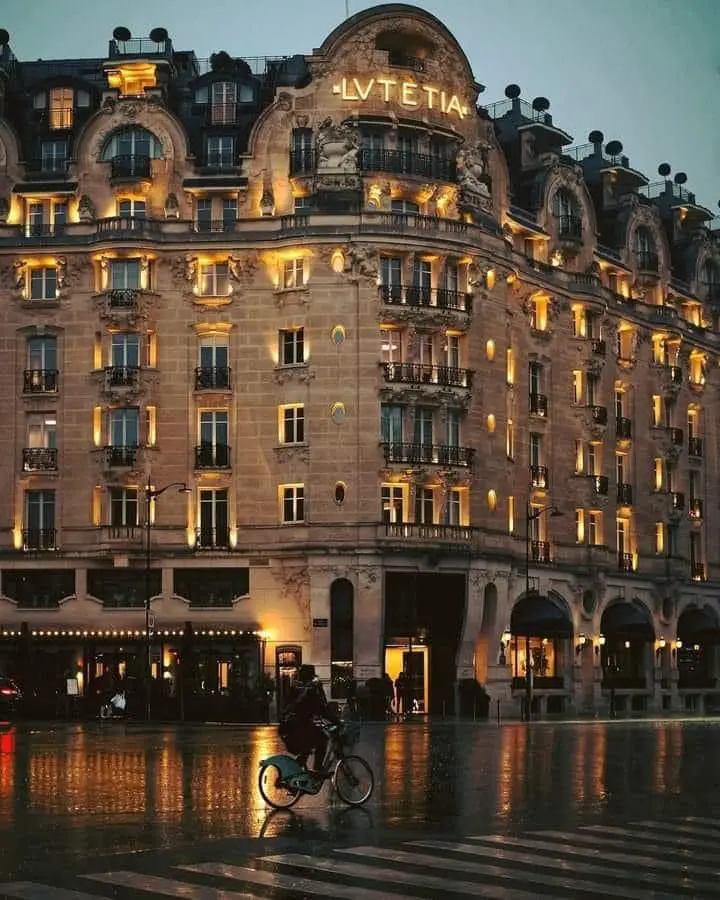Completed
Paris Arrival
Paris Arrival
Everything You Need to Know About Your Airport Arrival
Welcome to Paris—Almost
Before your Parisian adventure officially begins, there’s one more journey to make: the trip from the airport to the heart of the city. Most international visitors will arrive at either Charles de Gaulle (CDG) or Orly (ORY)—the two primary airports serving Paris. If you’re traveling from the United States or other long-haul destinations, chances are you’ll fly overnight and arrive in the early morning, often groggy but filled with excitement.
This page is here to guide you through your first steps on French soil. You'll learn what to expect at each airport, how to choose the best transportation option into the city, typical travel times and costs, and a few essential tips to start your arrival smoothly and confidently. Whether it’s your first trip or your fifth, arriving in Paris should feel as graceful as the city itself.
Charles De Gaulle
Charles de Gaulle is Paris’s largest international airport and one of the busiest in Europe. Most long-haul flights, especially those from North America, arrive at Terminal 2E or 2A, though international gates may vary depending on your airline. CDG is vast and can feel overwhelming—expect a long walk from your gate to immigration, often 15 to 30 minutes, depending on your terminal and arrival point. Once through passport control, you’ll retrieve your baggage and proceed through customs, which is usually a quick pass-through. Allow at least an hour from landing to reaching the arrivals hall, more during peak times. CDG is well-marked with English signage, but be prepared for queues, airport shuttles between terminals, and a bit of patience as you navigate your arrival into Paris.
Arrival Terminals
Arrival terminals at Charles de Gaulle are modern but sprawling, with limited seating and signage that can feel unclear after a long flight. Be prepared to follow multiple corridors and checkpoints before reaching ground transportation or meeting points. Follow signs for customs (douane).

Passport Control
At passport control, you’ll wait in line to enter a booth where an agent will check your documents, take your photo, and stamp your passport. The process is generally efficient but can involve a long wait depending on arrival time and how many international flights land at once.

Customs
After passport control, you’ll collect your luggage and proceed through customs. In most cases, you’ll simply walk through the green “nothing to declare” lane without any additional checks. However, random inspections can occur, so be sure to review what is and isn’t allowed into France before you travel.

After passport control, follow the signs to baggage claim, where you'll locate your carousel by checking the overhead monitors for your flight number. Baggage claim at CDG can be slow, especially during peak morning arrivals, so be prepared for a short wait. Carts are usually available and free of charge, and nearby restrooms and seating areas offer a quick break before continuing through customs.

Items Not Allowed
Fresh food or meat products (including sausages, cheeses made from raw milk, etc.)
Large quantities of medicine without documentation
Plants or plant products (e.g. seeds, flowers, fruit)
Animal products not factory sealed or from outside the EU
Weapons or pepper spray (without proper permits)
Fake designer goods or counterfeit items
Large sums of cash over €10,000 must be declared
Transportation
Getting to Paris from the Airport

Metro
Follow signs for the RER B from your terminal (usually via CDGVAL shuttle). Purchase a ticket to Paris (approx. €11.80) from the machines or ticket desk. Trains run every 10–15 minutes and stop at major Paris stations like Gare du Nord and Saint-Michel. To the city center takes about 45 minutes. Purchase a ticket at the terminal and hold onto it until you exit. You will need it to exit the turnstiles.

Roissy Bus
Head to the RoissyBus stop outside Terminals 1, 2, or 3. This direct bus to Opéra Garnier in central Paris takes about 60–75 minutes. Tickets cost around €13.50 and can be purchased using the SNFC app. One app per person. Do not buy 3 on the same app. Buses run every 15–20 minutes from 6 AM to 12:30 AM.

Taxi
Official Paris taxis are available at designated stands outside each terminal—never accept a ride from someone approaching you inside the terminal. Go to the official taxi stand. The flat fare is €53 to Right Bank and €58 to Left Bank, including luggage and passengers. Driving into the city can be 40-60 minutes in a taxi. Payment by card is typically accepted, but confirm before entering. Do not allow a taxi to leave until you've confirmed these set prices and that you've confirmed that the card reader is working. Because of all the issues with taxis I tend to avoid them in favor of the Metro or even the bus. Both a very local experience.

Private Transfer
Pre-book a private driver for a seamless arrival. Your driver will meet you at arrivals with a sign, assist with luggage, and drive you directly to your accommodation. Prices start around €70–€100 depending on the service and number of passengers. You must book this in advance to travel and you must confirm your transfer close to arrival. This is a great option for families or groups as larger vehicles are more readily available.

Ride Share
Use the app to book a ride once you’ve collected your luggage. Follow signs for “Ride Apps” or “App-Based Transport” pickup areas, usually located at Terminal 2E/2F. Communicate closely with your driver for their location and be aware that they cannot use the traditional arrival lanes. Driving into the city can be 45-60 minutes. Fares are dynamic, generally €45–€70 depending on time and traffic.

Rental Car
If you choose to rent a car, head to the car rental desks near the arrivals area. Roads into Paris can be congested, and parking is difficult and expensive. Renting a car is best suited for onward travel beyond the city, not for staying in central Paris. The city is so walkable you will not need a rental car. And frankly, it could end up being a costly choice by the time you park it, drive it, etc.
Additional Information
A few more things you might be wondering about.
Navigating signage in Charles de Gaulle (CDG) is relatively straightforward once you know what to look for. Most signs are in French and English, with clear pictograms for baggage claim, customs, passport control, transportation, and terminal connections. Follow the large yellow and black signs for arrivals and baggage, and blue and white signs for transportation options like taxis, RER B (train), or buses. If you’re unsure, look for the “Sortie” (Exit) signs and don't hesitate to ask staff—they're used to helping international travelers.
If you arrive in Paris before hotel check-in check with your hotel to see if they will hold you bags prior to check in. You can also store your luggage at one of the baggage hold services (consignes) available at major train stations like Gare du Nord, Gare de Lyon, and Gare Montparnasse. These facilities offer secure, short-term storage for a fee and are often open from early morning to late evening. If you're staying in a short term rental and won't be able to drop off luggage before check in, you can also use private luggage storage services like Nannybag or Stasher, which partner with local shops and hotels across the city for convenient drop-off points.
If You’re Leaving Paris Immediately
For travelers catching a train or transferring to another destination right after landing, head directly to one of Paris’s major train stations (like Gare de Lyon, Gare Montparnasse, or Gare du Nord), which are accessible via RER B, taxi, or private transfer from the airport. If your connecting journey begins at a smaller regional airport or bus station, allow extra time for traffic or transfer delays, especially during peak travel hours. It’s wise to give yourself at least 3–4 hours between landing and your next departure. If you have time to spare, grab a quick coffee or pastry nearby, but stay close to your connection point. Paris traffic is unpredictable.
There are two main schools of thought when it comes to managing jet lag. Some travelers swear by staying awake until local bedtime, no matter how tired they feel, to reset their internal clock quickly. Others prefer a gentler approach—resting as needed, then going to bed early and easing into the local rhythm over the first day or two. I personally recommend a soft landing: explore your immediate neighborhood on foot, enjoy a quiet meal, and wander close to where you're staying. Avoid cramming in sightseeing or heavy plans that first day. Go to bed early. Give your body permission to adjust, and you’ll feel more refreshed and ready to enjoy Paris the following morning.
While Charles de Gaulle airport is generally safe and well-patrolled, it’s wise to stay alert, especially in crowded areas like baggage claim, train stations, and taxi queues. Pickpocketing and distraction scams can occur, particularly around the RER B and Roissy Bus platforms. Avoid anyone offering unsolicited help, especially with ticket machines or luggage. A simple no merci and a brisk walk away will do. Only use official taxis from the designated queue (ignore anyone who approaches you directly offering a ride), and always keep your belongings zipped and within reach during your transfer into the city. A little awareness goes a long way in ensuring a smooth and safe arrival. You don't need to be afraid. Just aware.

Orly
Orly (ORY) is Paris’s second international airport, smaller and more manageable than CDG—making it a favorite for domestic and some international travelers. Located about 13 km (8 miles) south of Paris, it's a convenient entry point for those arriving from other parts of Europe or with budget carriers.
Arrival Terminals
Orly is divided into two main terminals: Orly 1–2–3 and Orly 4. Flights from the U.S. and other long-haul routes typically land in Orly 4, while intra-Europe flights often use Orly 1–3. Signage is clear and walking distances are generally shorter than CDG. Follow signs for “Contrôle des Passeports” and “Douane” (customs)

Passport Control
At passport control, you’ll wait in line before entering a booth where your passport is scanned and stamped. Wait times vary, but they are often shorter than at CDG due to fewer international flights arriving simultaneously.

Customs
After passport control, you’ll collect your luggage and proceed through customs. In most cases, you’ll simply walk through the green “nothing to declare” lane without any additional checks. However, random inspections can occur, so be sure to review what is and isn’t allowed into France before you travel.

After clearing passport control, head to the baggage claim area marked with your flight number. Screens display belt numbers, and luggage typically arrives quickly due to the airport’s smaller size. Carts are free and easy to find.
Transportation
Getting to Paris from the Airport

Orlyval + RER B
Take the Orlyval shuttle to Antony station, then connect to the RER B train into central Paris. It’s efficient but includes a transfer, costing around €12.

OrlyBus
The OrlyBus runs directly to Denfert-Rochereau in southern Paris. It’s affordable (~€11), simple, and takes about 30 minutes depending on traffic. You would then transfer to the Metro to get to the city center.

Taxi
Official taxis from Orly to central Paris cost a flat rate of €32 (Left Bank) or €37 (Right Bank). Follow signs to the taxi queue—never accept unsolicited rides.

Private Transfer
For a seamless and stress-free arrival, consider booking a private driver in advance. They’ll meet you at the terminal with a name sign.
Prices start around €70–€100 depending on the service and number of passengers. You must book this in advance to travel and you must confirm your transfer close to arrival. This is a great option for families or groups as larger vehicles are more readily available.
Additional Information
A few more things you might be wondering about.
Orly’s signage is multilingual and color-coded, making navigation straightforward. Look for icons and arrows pointing to Sortie (Exit), Taxis, Bagages (Baggage), and Transports.
If you arrive in Paris before hotel check-in check with your hotel to see if they will hold you bags prior to check in. You can also store your luggage at one of the baggage hold services (consignes) available at major train stations like Gare du Nord, Gare de Lyon, and Gare Montparnasse. These facilities offer secure, short-term storage for a fee and are often open from early morning to late evening. If you're staying in a short term rental and won't be able to drop off luggage before check in, you can also use private luggage storage services like Nannybag or Stasher, which partner with local shops and hotels across the city for convenient drop-off points.
Orly is generally safe, but keep watch over your bags and avoid anyone offering unrequested help—especially near transport hubs. Only use official taxi queues and ride shares. If someone approaches you for signatures or donations, it’s likely a scam—just smile and keep walking.

Reccommendations

CDG Map | Information
Use this interactive map to familiarize yourself with the layout of Charles de Gaulle, including terminals, baggage claim, customs, and transport connections. Helpful for understanding where you’ll land and how to navigate your way out with ease.

Orly Map | Information
Orly is smaller and more navigable, but this airport map will help you pinpoint your terminal, baggage areas, and ground transportation options for a smooth transition into the city.

Private Transfer
For a seamless and comfortable arrival, consider booking a private transfer in advance. It’s especially ideal after a long flight, with someone waiting to greet you and take you directly to your accommodations. Here is our reccommendation.
And there you go...
Arriving in Paris is the first step in living the story you came to write. Whether you land at Charles de Gaulle or Orly, understanding what to expect helps you step into the city with calm, clarity, and confidence. From passport stamps to transportation choices, a little preparation turns a hectic arrival into a smooth transition. Keep this guide close as you begin your Parisian journey—and remember, the moment you land, your adventure has already begun.
Commenting is not enabled on this course.